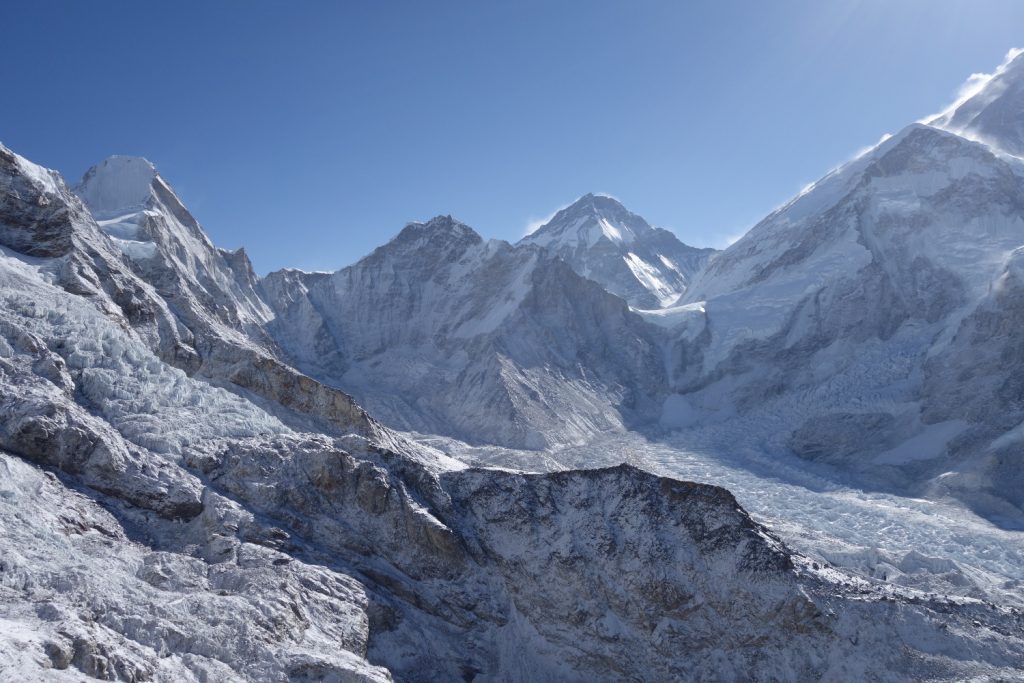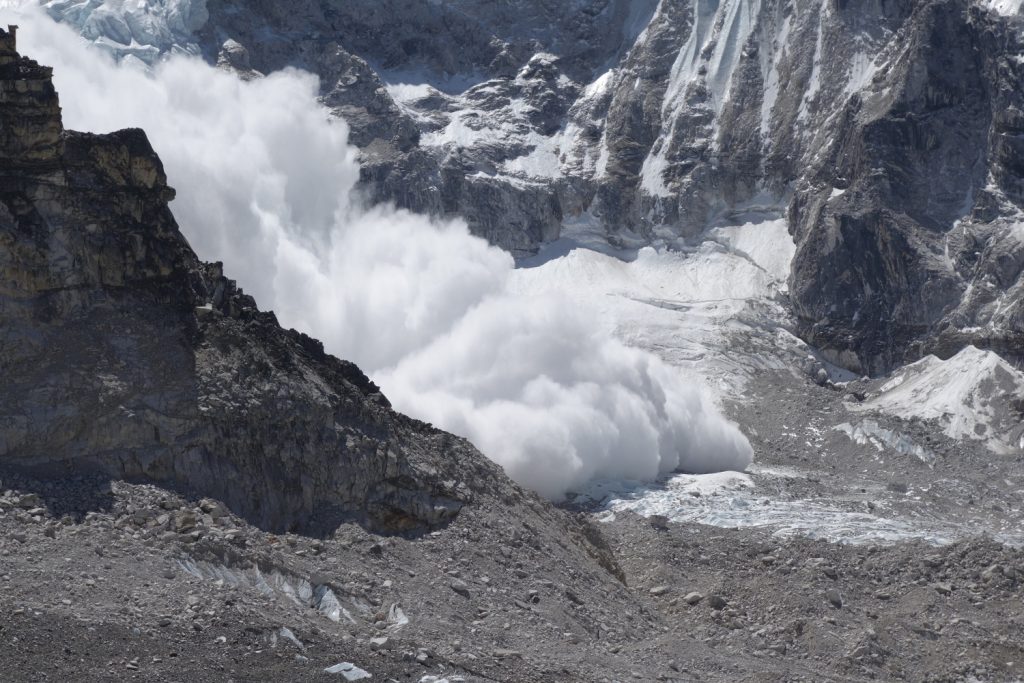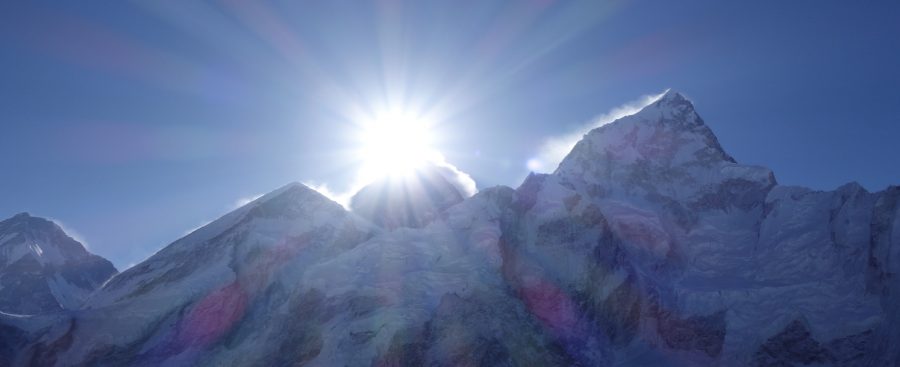The first climbers for two years have reached the summit of Everest via the Southeast ridge route; a good occasion to look back at last year’s earthquake, tourism around Everest and the role of the Sherpa climbing guides. Many media outlets used the aftermath of the earthquake to reinforce the image of the rich tourists exploiting the poor locals. But is it that simple? The narrative is fitting but the situation on the ground is, as usual, much more complex. Opportunities,income and power but also pride and adventure; many factors drive the trekking tourism industry, the change in the culture of the Sherpa and serious number of accidents.
Almost 9000 dead and millions homeless, the summary statistics of last year’s earthquake (and aftershocks) sound shocking but the dry numbers don’t really capture the degree of devastation many had to experience. And the Nepalese government has yet to make good on their promise to assist people with the reconstruction of their homes and many villages off the major tourist tracks are still in tatters.
Climbers and trekkers were more fortunate: being outside rather than in some unstable building, most remained unharmed and could quickly return to their home country far from the chaos Nepal was plunged into. With one major exception: On the Nepalese side of Everest, the basecamp was wiped out by an avalanche originating from the peaks opposite the Khumbu icefall, somewhere between Pumori and Lingtren, killing 22. Ice avalanches can develop enormous forces on the way down steep slopes and travel much further than one would initially expect. At basecamp, many sustained serious head or chest trauma. As in the previous 2014 avalanche, most of the casualties were Sherpas and other expedition staff members.

By now, the problems created by more intensive tourism in the Himalayas are well known. More tourism means more pollution and more interference with the lives of local people. A sizeable fraction of the Sherpa work as guides because of the significantly higher income that can be earned compared to more traditional occupations like, say, farming. But it involves considerably more risk, especially for climbing guides (compared to pure trekking guides). The BBC documentary “Climbing Everest with a mountain on my back” drives home a clear message: Tourists come and claim all the credits for their adventures while the locals do most of the work and face significantly higher risks. For instance, Sherpa guides and porters have to complete the dangerous climb through the Khumbu icefall way more often than their clients. Prolonged exposure leads to a higher number of accidents. The difference in income between tourists and locals manifests in an asymmetric distribution of power. A mountain guide in the Alps has much more sovereignty over decisions than a Sherpa guide. If a Swiss mountain guide decides that his clients don’t have the ability to complete a climb, that’s the end of it. Most guides in the Himalaya are incentivized to keep quiet and press on. This leads to greater risk-taking for clients and guides.

And then there is the anachronistic class system some expedition organizers establish. This April, I talked to a Brit who was in charge of setting up the base camp for an agency that shall remain unnamed. Asked about how many people are in his camp, he replied: “8, not counting the Sherpas”. They took their lunch separately and the whole expedition had an air of colonialism. An extreme example, no doubt. But not as rare as it should be and far from the fortunately now very common spirit of equality that the climbing community is trying very hard to establish.
Nevertheless, the choice of occupation is their free decision. Many Sherpas are proud to be well-trained climbing guides. The higher potential income has certainly its attraction (and it is a valid basis for any career decision) but after talking to countless guides, I came to the conclusion that they are enjoying climbing mountains as much as their clients. Mountaineering as a past-time only rich, unprepared tourists are enjoying – most certainly a media fiction. But there are concerns about safety. Almost all guides have friends and family members involved in Everest expeditions. Fears of dangerous and unpredictable conditions in the Khumbu icefall this year were pervasive. Some organizers are pausing for the season, waiting for more reliable information on the state of the icefall as well as some of the seracs. A similar story applies to Dhaulagiri. The rapid movement caused by the earthquakes altered the underlying structure of the ice. And those structural changes cannot be assessed from the surface. A number of guides were having serious concerns. In higher income countries, most of the risks would have been addresses with increased regulation. But in Nepal, this usually boils down to tokenism. The government increased the benefit of the guides’ mandatory life insurance which is paid for by the clients. But as a Sherpa remarked to me: A larger payout is fine but does very little to save lives.
In the absence of regulation, it’s the climbing community that should look after the safety standards. Climbing on Everest cannot (and probably should not) be completely safe. But smaller climbing parties where guides and clients are equally empowered to abandon the climb would go a long way in reducing the risk. Involving clients more heavily in the support work would reduce the asymmetries in the death rates. But both approaches are incompatible with the type of extensive adventure tourism practised by the majority of agencies. It’s the responsibility of the individual climber (the ones that hold most influence) to consider all those aspects. An expedition where clients and Sherpas eat separately – certainly not with me!
The first to reach the summit this year was a group of Sherpa guides. A fitting reaffirmation of their perseverance. But unless both organizers and tourists reconsider their approach, no real changes can be expected.
